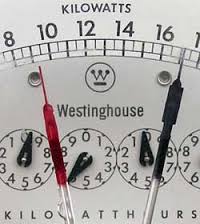
8 star plus energy rating
Envelope please. And tonight’s winning number is 8.1! We’d just opened an email from David to discover our house designs had scored an 8 star plus energy rating.
What does 8 star plus mean?

The Nationwide House Energy Rating Scheme (NatHERS) is a standardised way of comparing how much energy a home is likely to use for heating and cooling throughout the year. The lowest score is 0 (maybe something like our existing home). Best score is 10 (probably uses body heat to stay warm in winter). We used the folk at Green Rate to crunch the numbers for us. David collated a wad of design details which Green Rate put through their computer program.
Getting to an 8 star plus rating is a pleasing result. It means our designs are well above the minimum rating of 6 for new Victorian homes.
The way to get there is using a range of passive design features such as living areas on the northern side with large windows to admit winter sun, eaves to shade summer sun, good insulation and double glazing.
Aiming for a high energy rating makes sense for a several reasons.
People living in high rating homes experience a better environment. Indoor temperature tends to remain at a comfortable level despite Melbourne’s extremes. For example, the insulation and shading prevent the house turning into an oven on those 40º plus days.
The higher the rating, the less energy is needed for heating and cooling. This means spending fewer dollars on electricity so there is a hip pocket benefit right there.
Of course, using less energy also translates to an overall environmental benefit, particularly if the electricity comes from a coal fired power station. Taking any opportunity to reduce fossil fuel consumption is a good thing.
What does the rating mean for electricity demand?

The 8 plus star rating is equivalent to an annual electricity demand of 56 MJ/m². If my conversions are correct, this means a daily average of 5 kWh for heating and cooling. According to our electricity retailer, the average two person household in our area consumes 15 kWh per day during winger. Surveys show nearly half of that goes into heating and cooling.
Given that our homes are going to be fitted with solar cells and battery storage, the actual cost of this electricity will be less. I’d like to say it’s free, but that’s not exactly true. Using a grid connection for back-up power means paying a service fee, even if there aren’t any electrons flowing in from the wires in the street.
Closer to deciding on insulation.
The energy rating software also provides the ideal opportunity to test insulation options. We are considering two insulation choices – Kingspan or polyester.
According to the program, there is a small improvement of 0.1 stars going from polyester to Kinspan.
For now, we are leaning towards the polyester option because it’s easier to work with and is mostly recycled material.
There is one insulation change that will be made. Going to R6.0 in the ceiling adds 0.1 to the star rating. It’s the sort of upgrade that makes sense to do during construction so we have better insulation in place from Day 1.
Any changes to the cladding?
In for a penny, in for a pound. While we were considering insulation options, we also asked Green Rate to check on the cladding. What would happen if our claddings were replaced with 75mm expanded polystyrene sheets (EPS)? Essentially, we could wrap the place in foam.
Turning our homes into giant eskies only added 0.1 stars so we’re sticking with the options already chosen (eg wood and fibre cement sheeting).
Lessons learned?

Good design is rewarded with a good energy rating.
The NatHERS rating program confirmed David’s belief that comfortable, energy efficient homes are based on passive design principles.
So another piece of the planning permit application jigsaw has now dropped into place.




